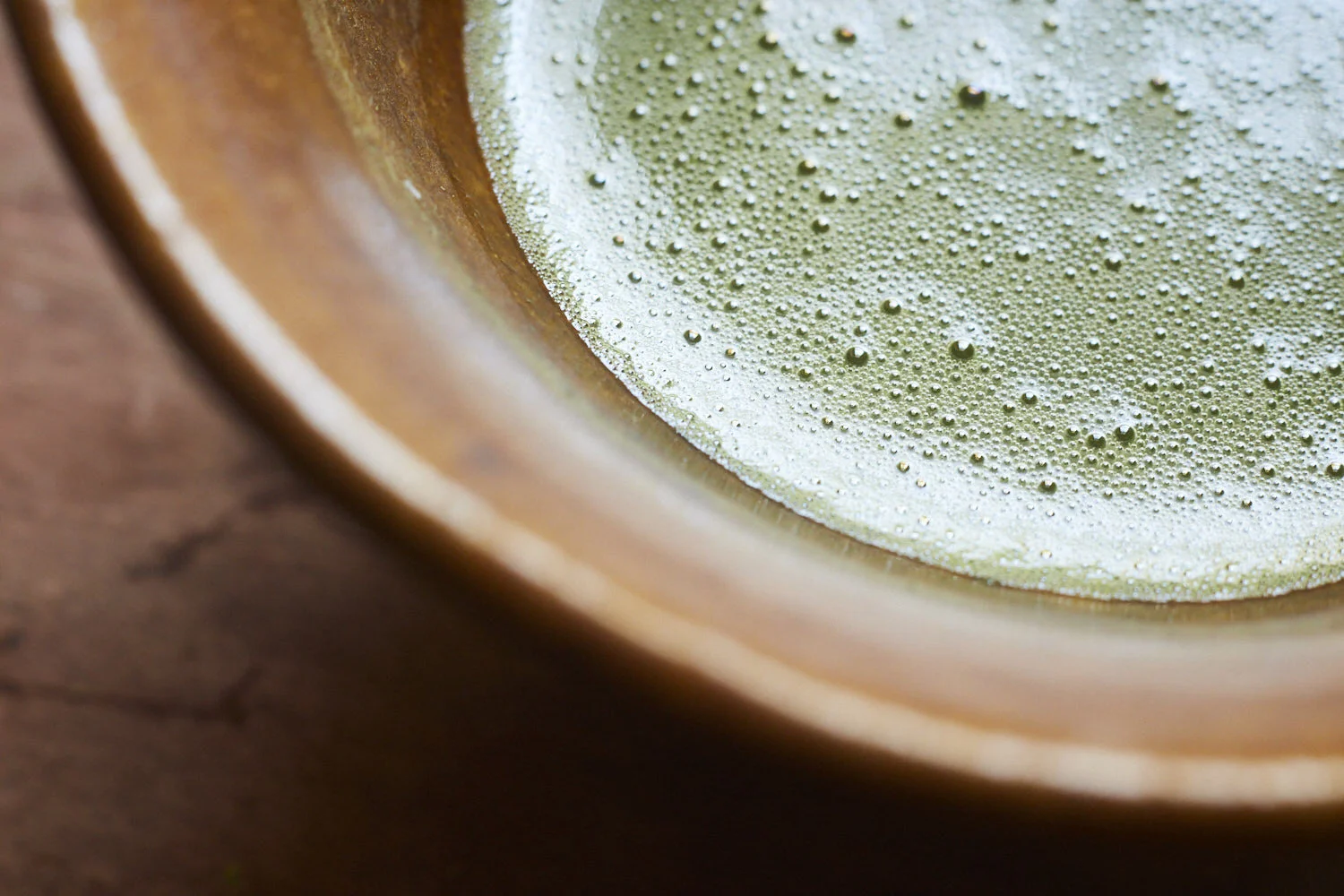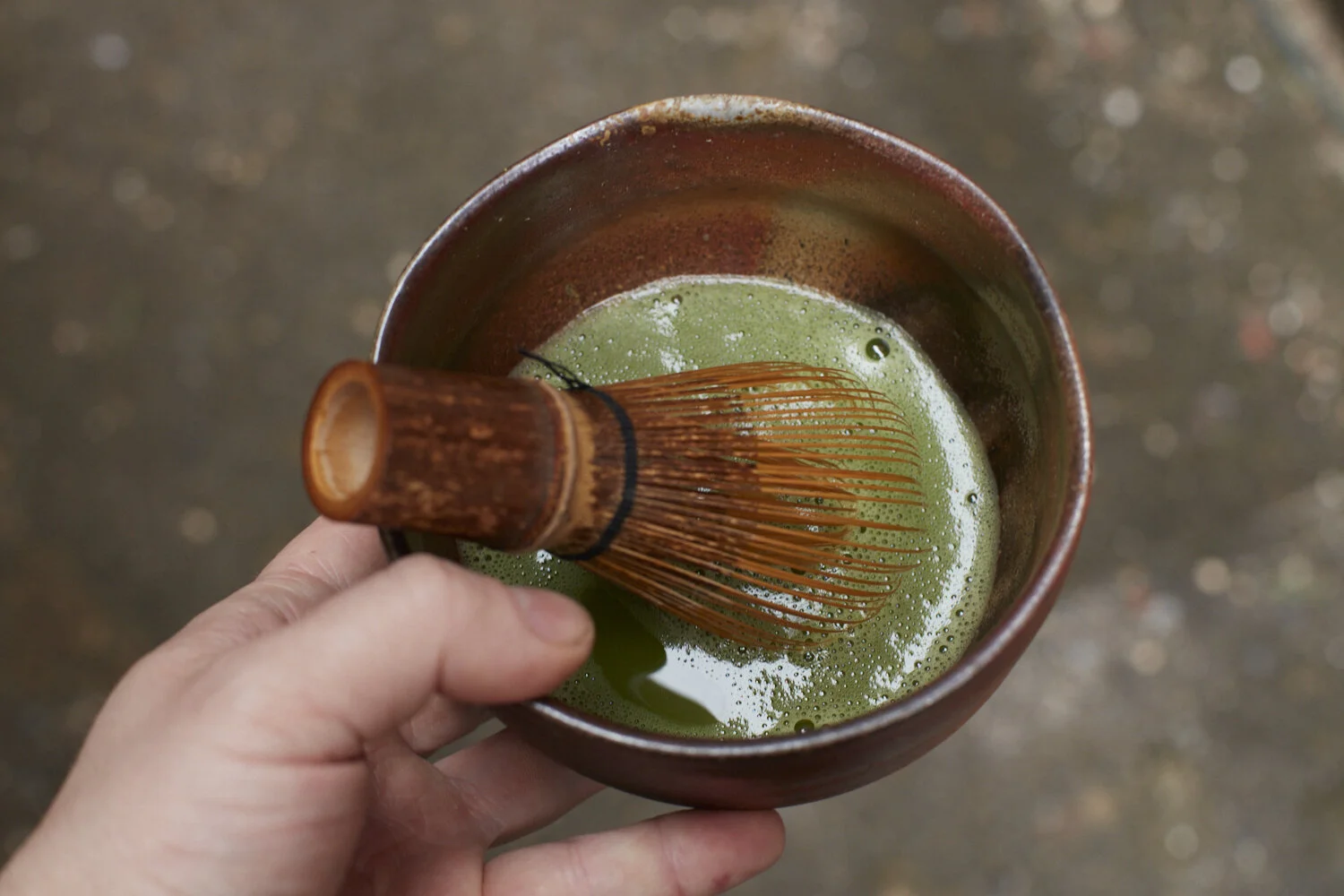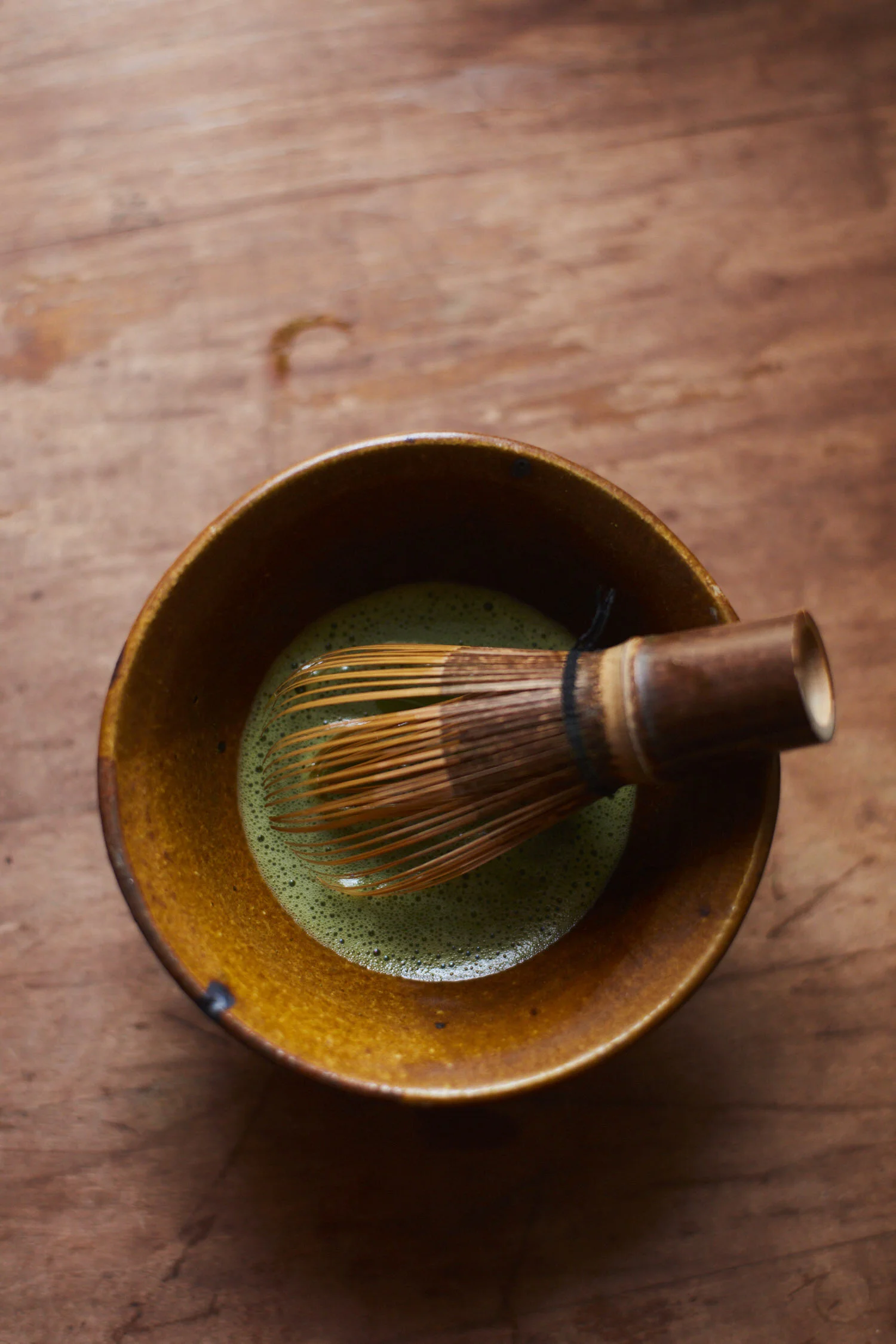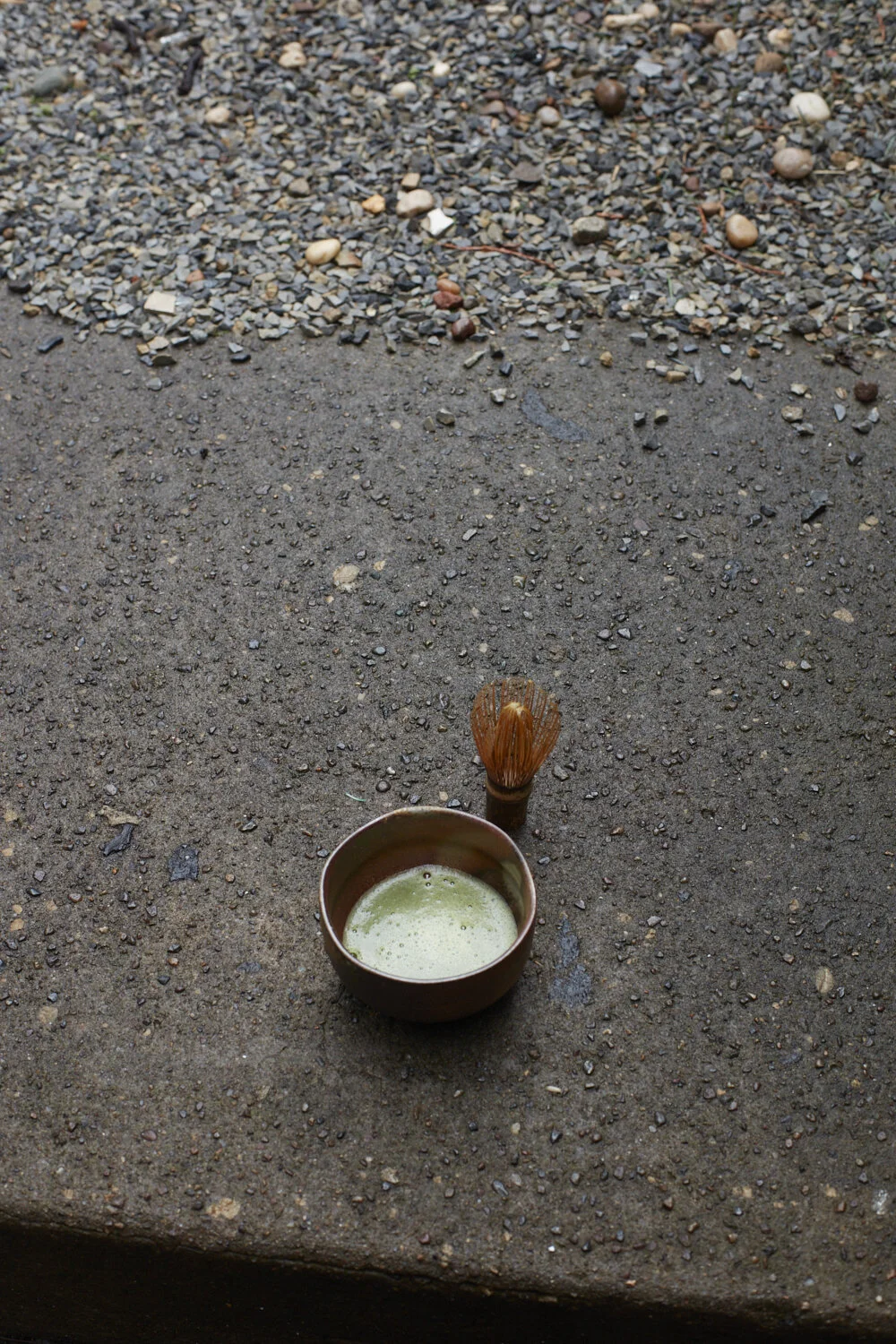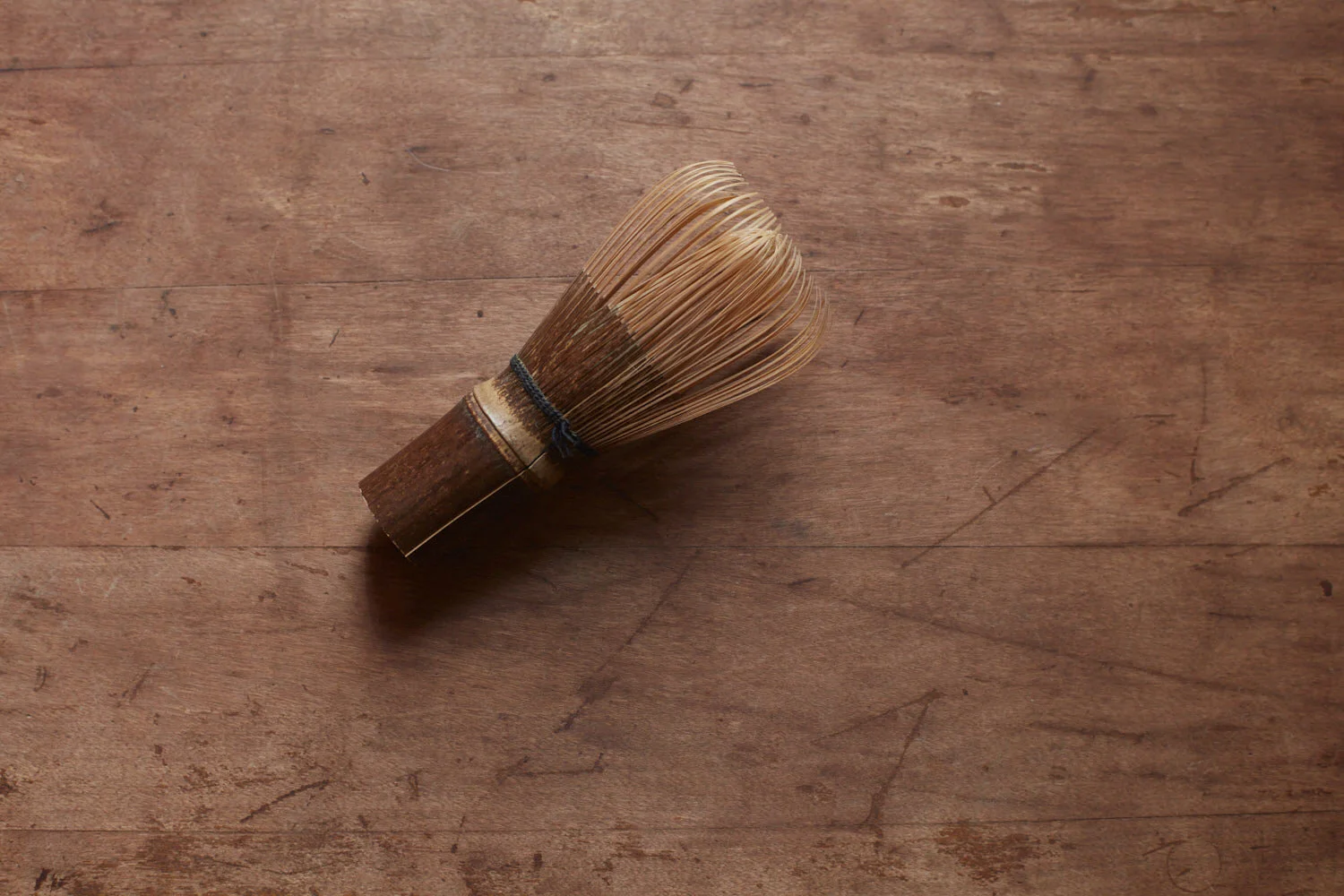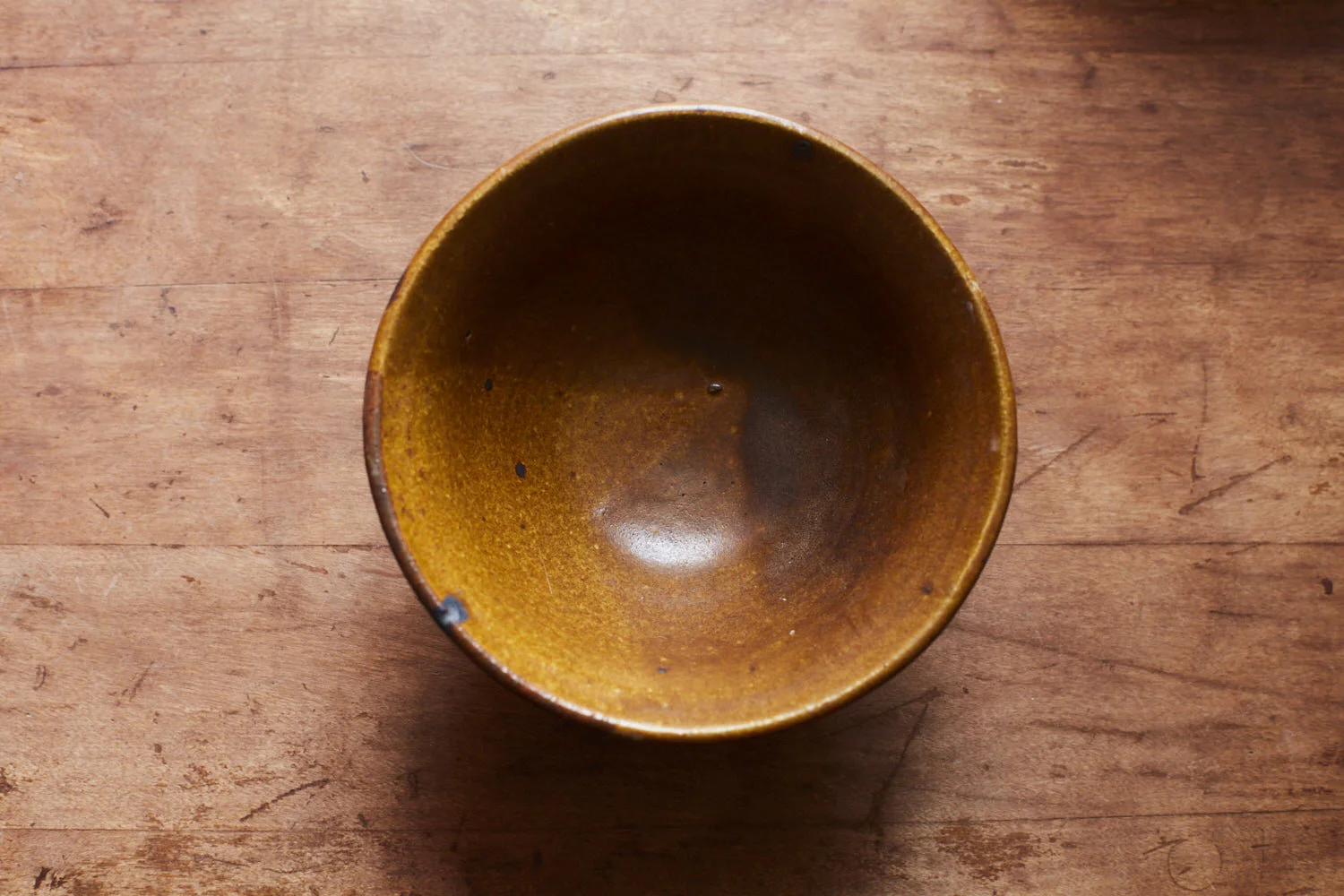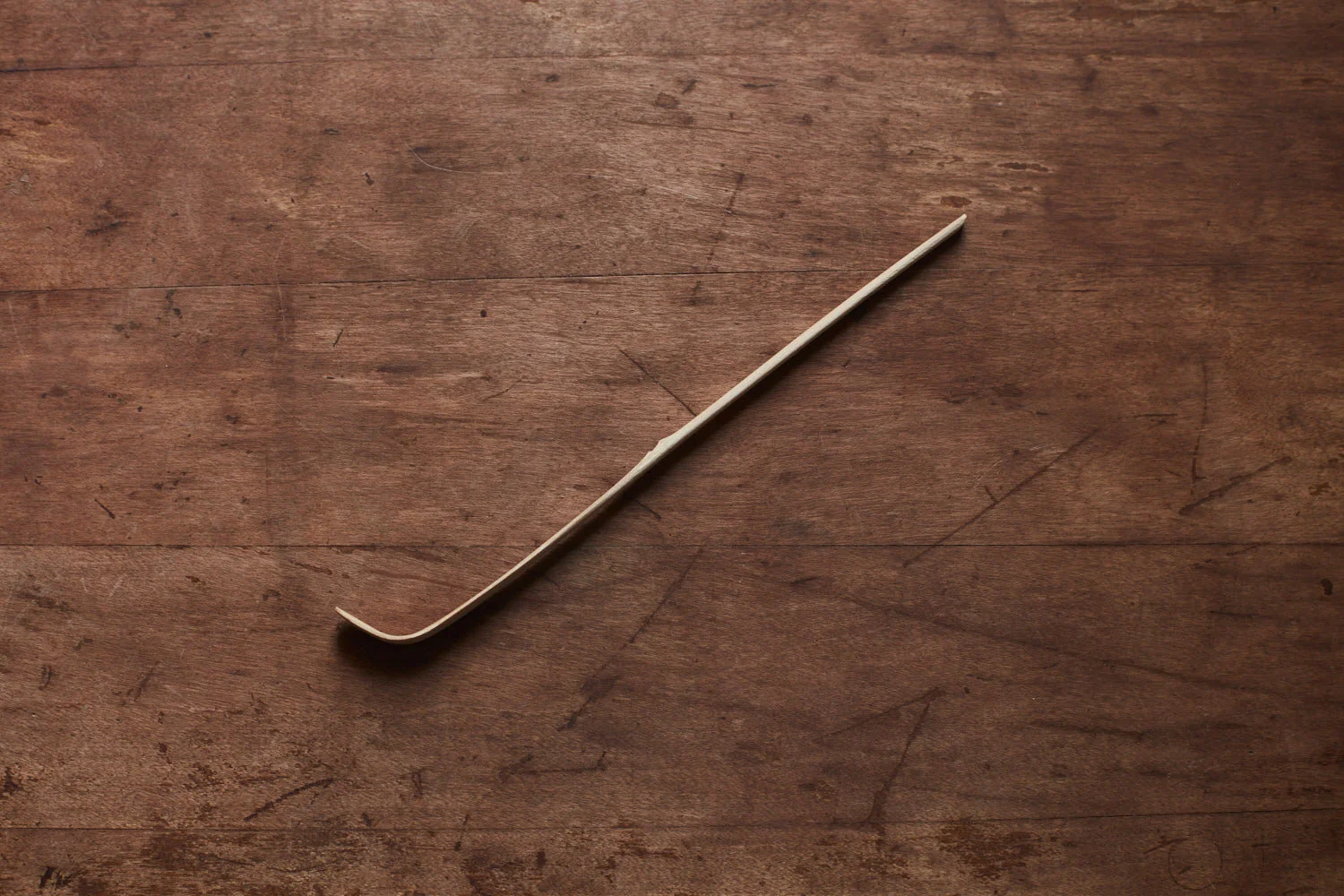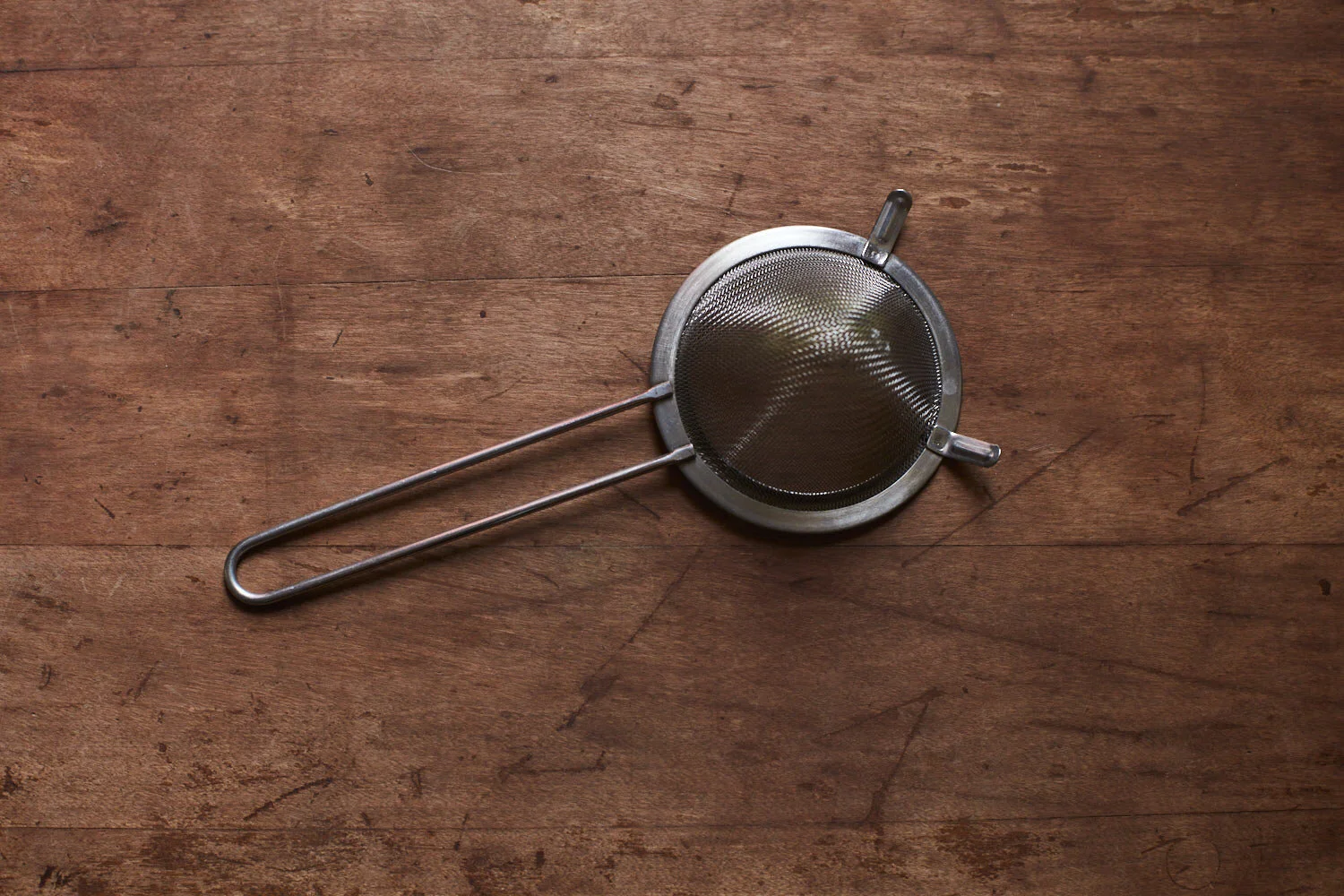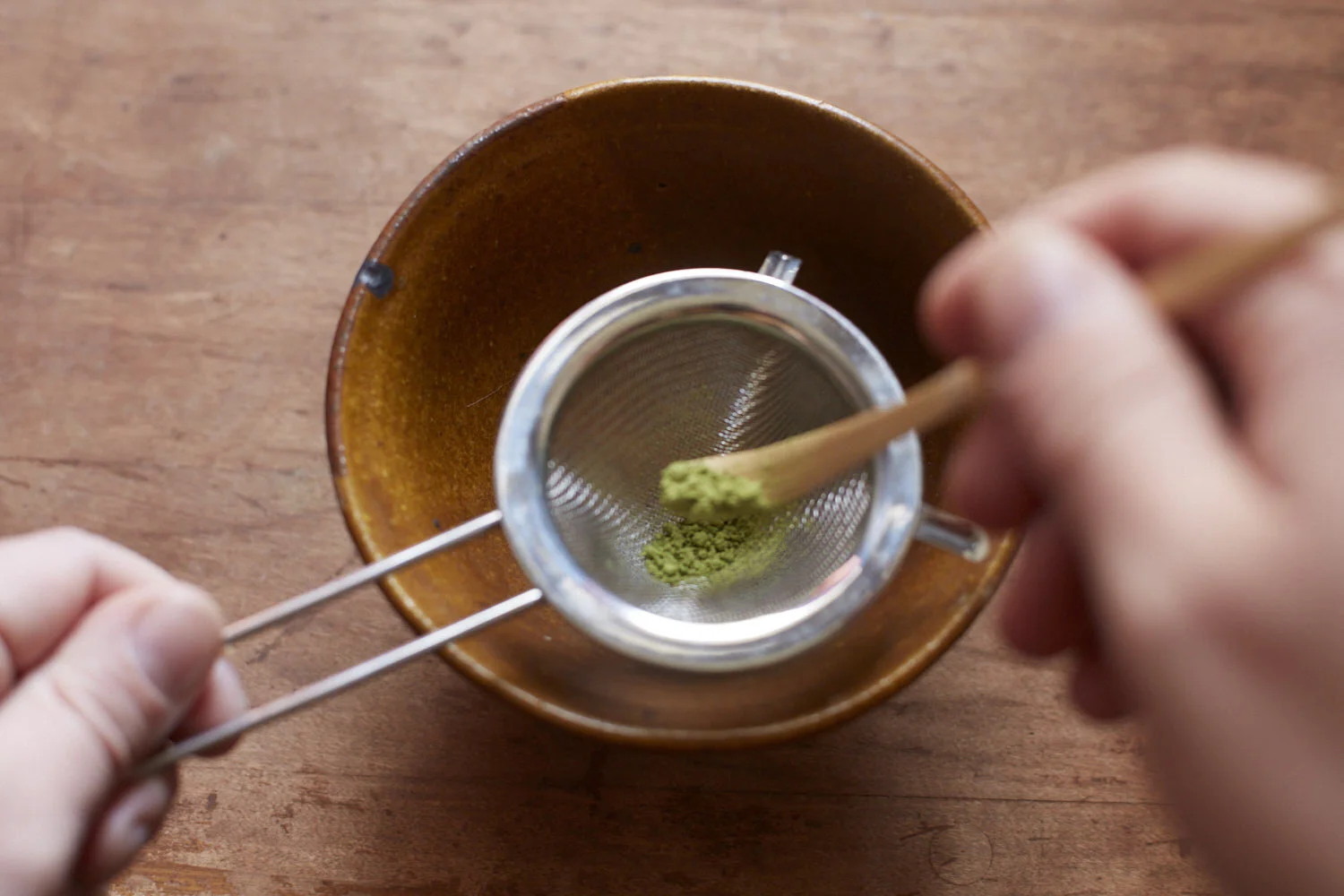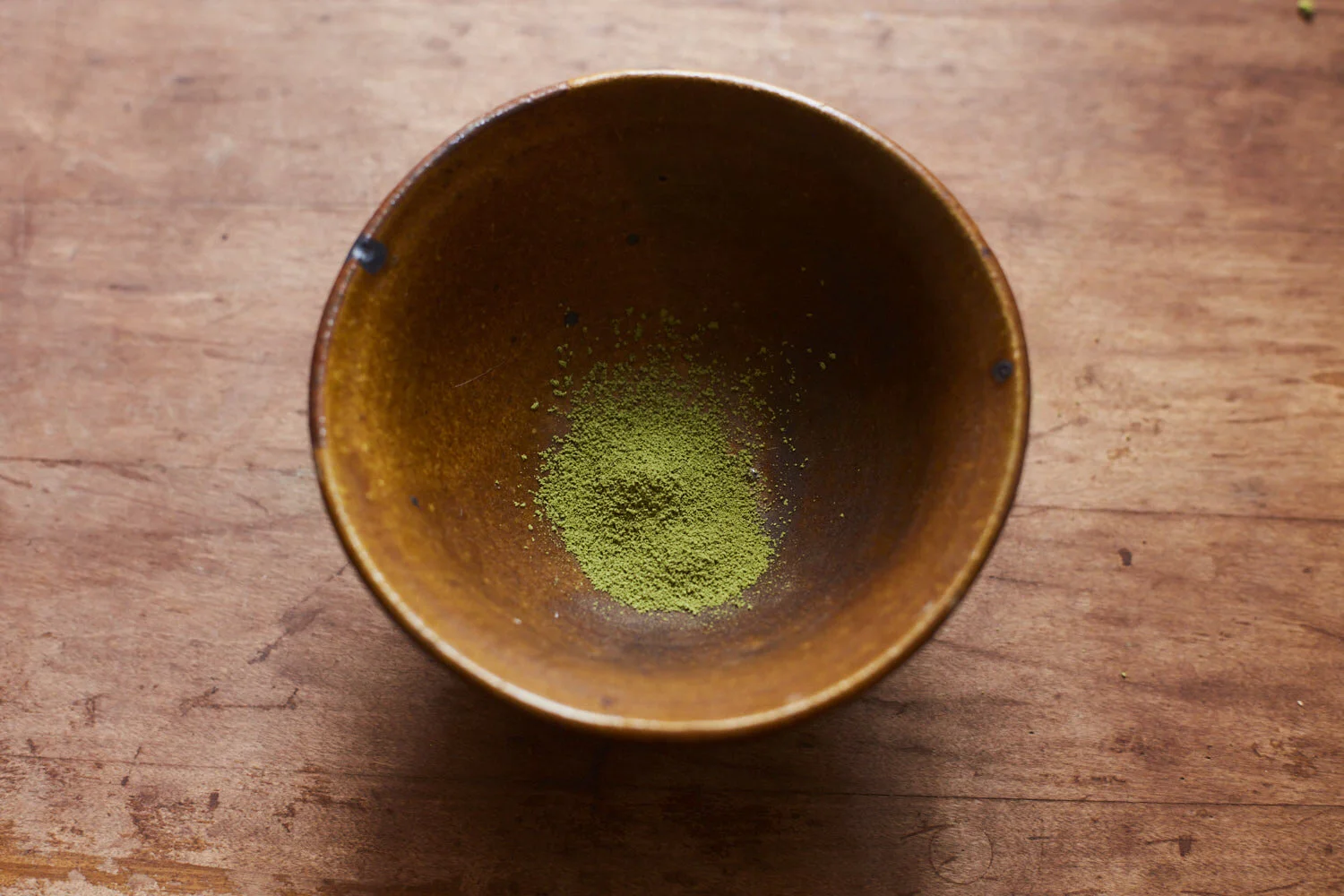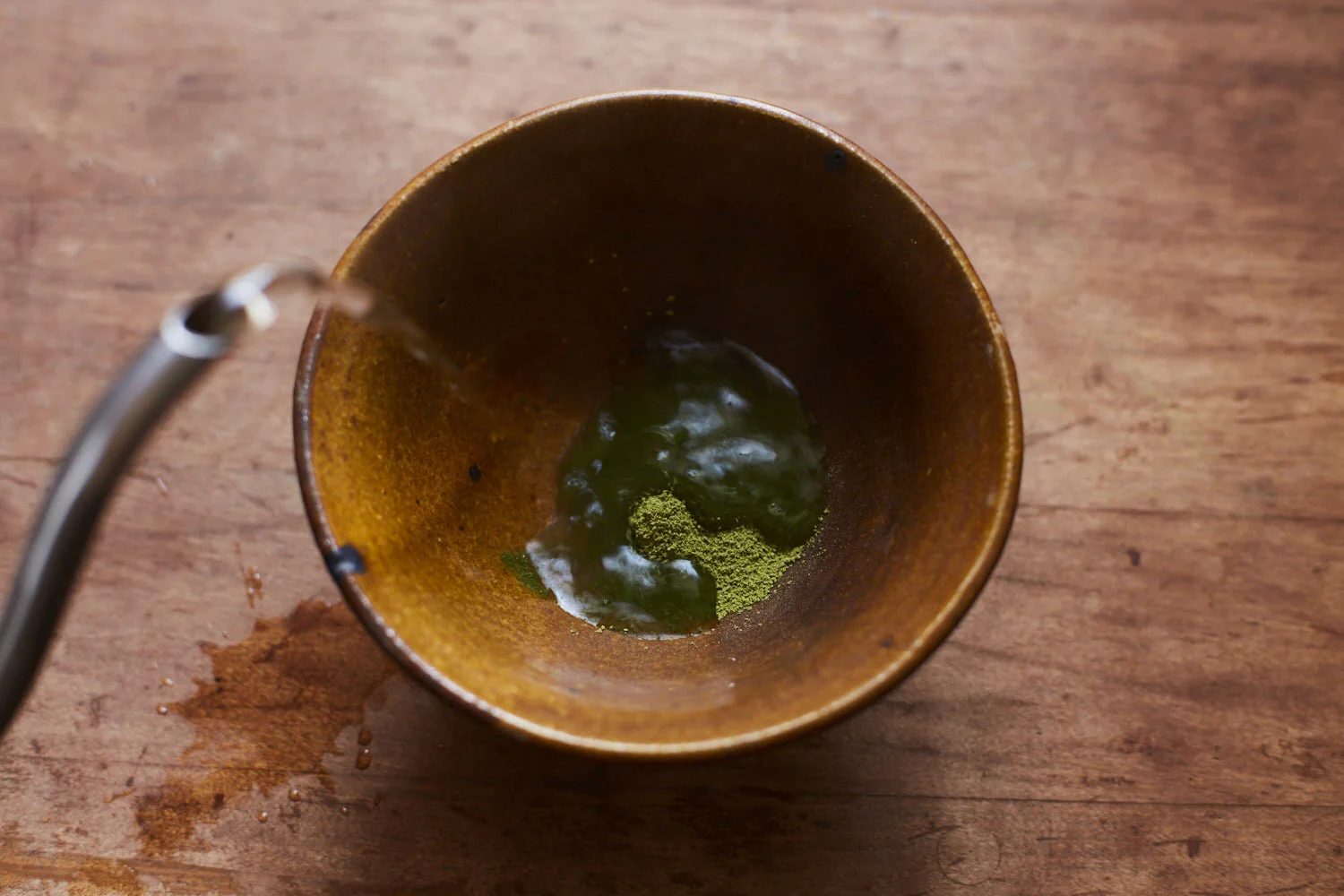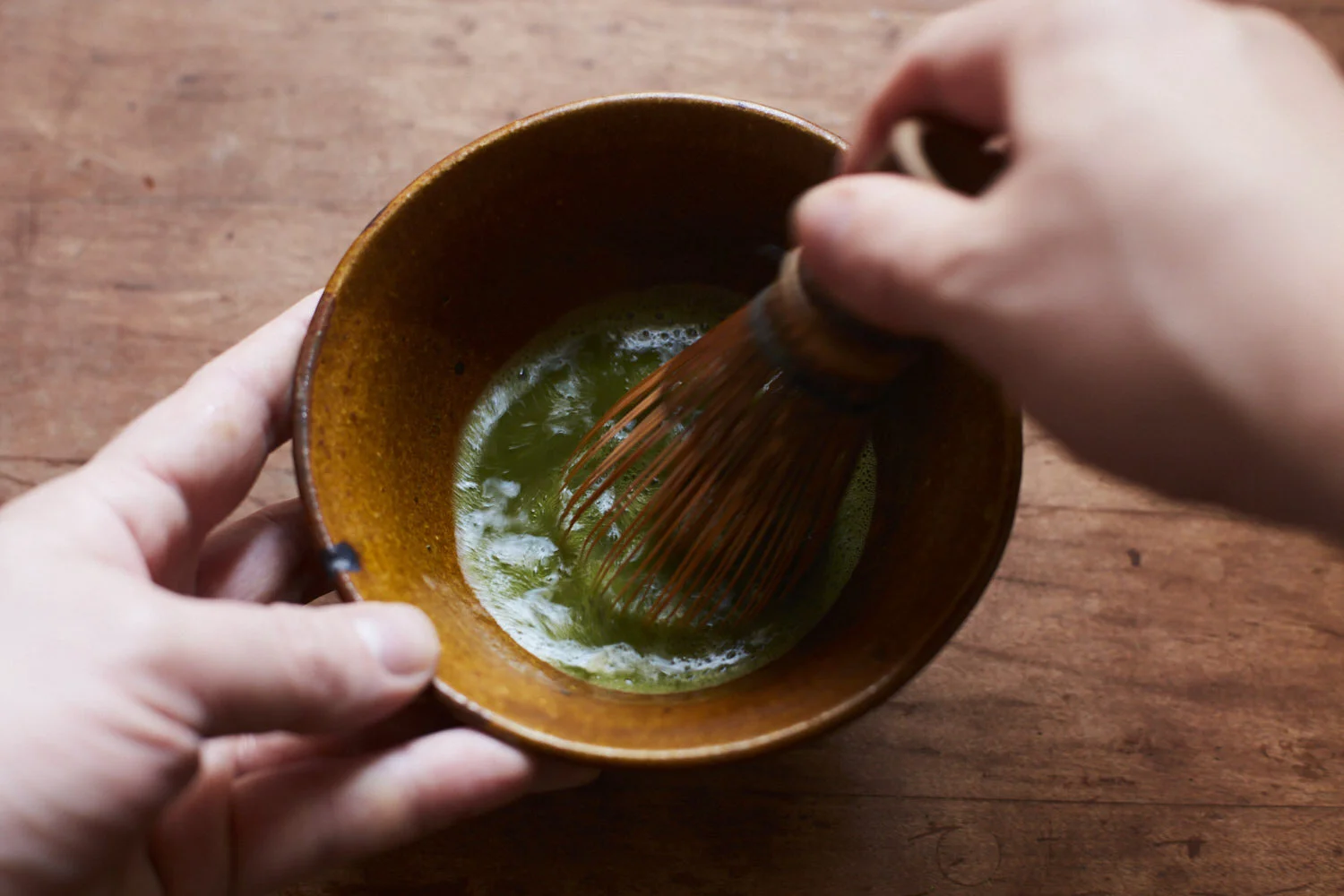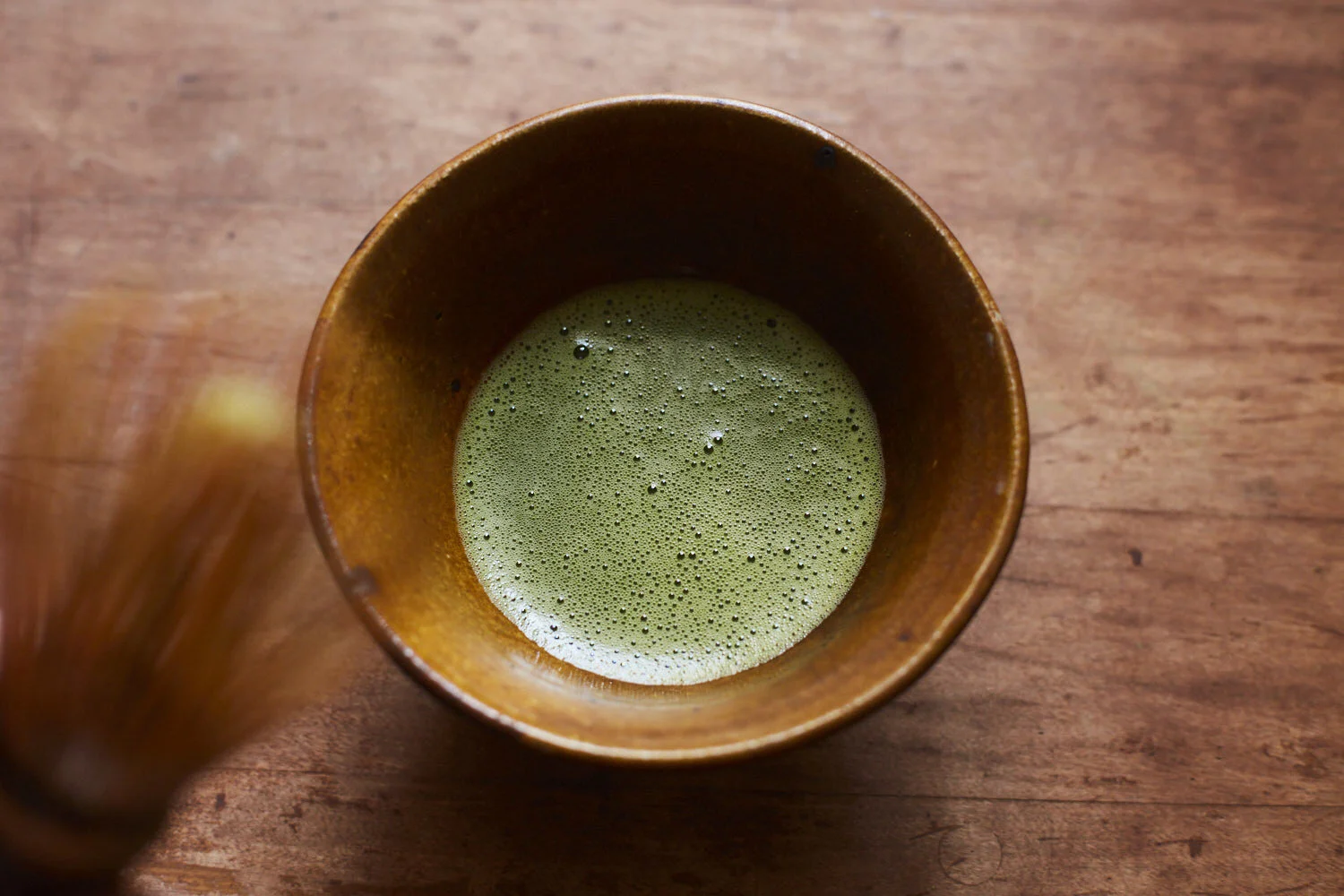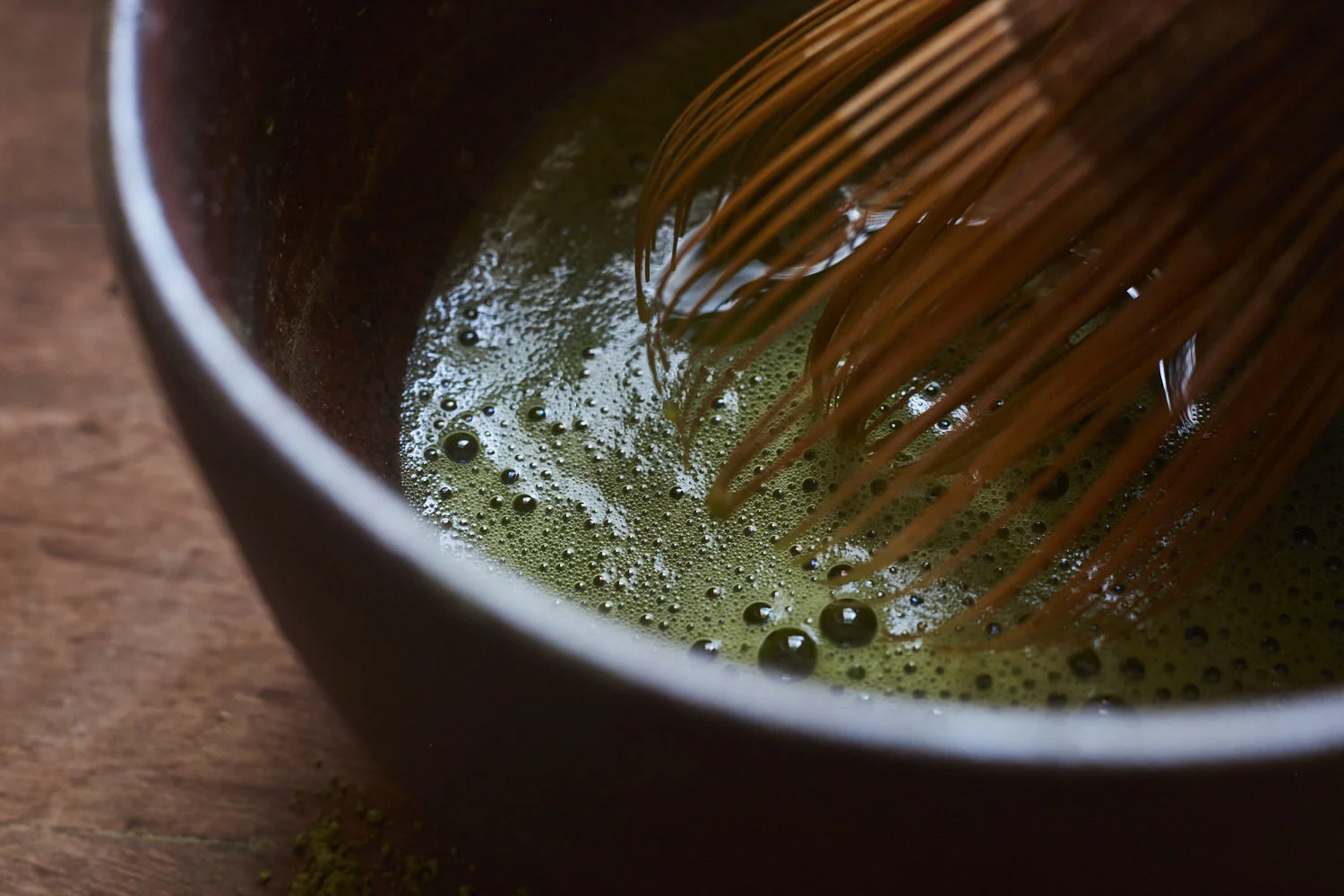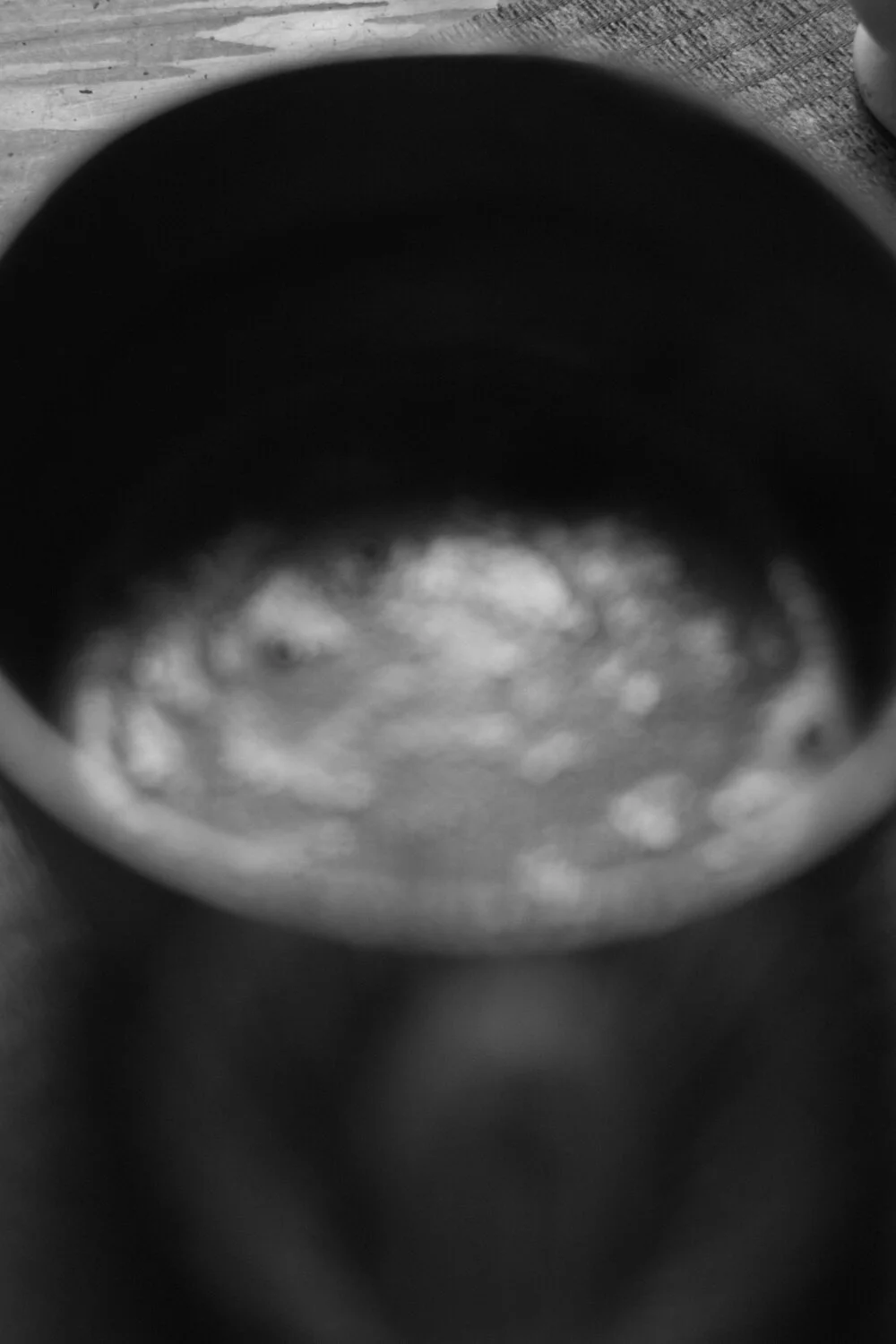What Does Matcha Taste Like? (Flavor Guide)
Whether or not you're new to Matcha green tea…
The terms used to describe flavor are kind of difficult to understand...
At least they were for me.
The descriptors used to explain flavor don't mean a lot until you start associating words to specific tastes...
But there are some useful terms and flavors to be aware of.
And that's why I wrote this article!
We'll go over (in geeky detail) what does matcha tastes like?
We'll dive into different flavors associated with almost all matcha teas, what causes some of the tastes, and so much more.
What is Matcha?
Let's quickly go over the basics – What is Matcha?
Plain and simple – it's a green tea powder from Japan that's whisked into warm water.
So unlike most teas that are brewed from dried loose leaves, matcha green tea is tiny stone ground particles of the tea leaf that are suspended in water and drank.
(Sounds like a mouthful, but I promise it'll make sense!)
This makes matcha unique in a few ways:
It makes the flavor profile quite specific. Matcha has its own distinct, direct flavor that loose leaf teas do not.
Because it’s powdered, suspended in water, then consumed means you’re sipping on massive amounts of antioxidants.
Matcha's Flavor Profile
So, what does matcha taste like?
Generally speaking, matcha has a bright, fresh, green flavor.
It's smooth, slightly bitter, and reminiscent of green vegetables.
There's also a prominent savory note (known as umami.)
While this is the general flavor of matcha, specific teas grown in different locations will have their unique flavor profiles.
This is a concept known as terroir, which we'll get to shortly.
So just keep that in mind!
Common Matcha Flavor Descriptors:
Fresh
Vegetal (tasting like green vegetables)
Smooth
Bright
Green
Earthy
While these are general terms, each matcha will have its unique flavor profile.
Why?
Well, like any agricultural product that's taste specific, growing location matters a lot.
So much like wine, tea picks up a lot of flavor from the soil and micro-climate of where it's grown.
This is a concept called terroir.
Which is a term often used in the wine world.
Surprisingly enough, tea is a lot like wine...
Matcha Terroir Explained
Like I briefly mentioned above, tea is a lot like wine.
How so?
Well, the plant picks up a lot of flavor from its microclimate:
The soil, the way the sun hits the plant, the way water reaches its roots, altitude, etc...
And different varietals (different versions of the tea plant) alter the overall flavor of a tea.
This is exactly how grapes used for wine influence a wine's flavor.
Some locations are better suited for wine growing –
In reality, this has a lot to do with what a microclimate provides and doesn't provide from a plant.
Some stressors to the plant will make some flavors more pronounced.
So the same is true with the tea plant.
Certain growing locations are known for producing better tasting matcha.
Or matcha with unique, specific flavor profiles.
This is one of the coolest (and geekiest) parts of learning about tea.
(In my humble opinion.)
There are so many subtle flavors that become apparent as you train your palette and drink more kinds of tea.
So to recap, matcha from different places or different varietals of the tea plant can change the subtle nuances of flavor within a bowl of tea.
If you wanna get real geeky, check out our matcha terroir guide that goes over some of the best matcha growing areas in Japan.
Umami Taste in Matcha
Matcha is known for having a unique, savory flavor that is a bit hard to describe (but easy to taste).
It's a deep, savory, brothy note that is sought after and quite interesting.
You'll often hear the term umami when this flavor is being described.
Some matcha teas (and some Japanese loose leaf teas) will have more prominent umami notes.
This flavor comes from an important step within the growing of matcha tea...
Shade Growing & L-Theanine Content
While this isn't an article on all of the geeky steps within matcha processing, it's important to understand how growing conditions impact the overall flavor of a tea.
Before the tea leaves are picked, there is a final step required to make Matcha:
The tea plants are purposely covered with translucent row covers that block light.
Why?
Well, lower light levels stress the plant and increase amounts of L-Theanine within the plant.
L-Theanine is an amino acid that imparts that savory element within the taste of matcha and other Japanese teas.
(Scientifically speaking, amino acids make up parts of proteins.)
What's also cool is the fact that L-theanine is responsible for causing the relaxing, mellow feeling you get when drinking tea.
Caffeine in Matcha
Does Matcha Have Caffeine?
Simply put – yes matcha has caffeine.
It has quite a bit – at least compared to other forms of tea.
Because remember, you’re consuming the entire leaf and not just the extraction from steeping tea leaves.
Caffeine is responsible for the subtle, bitter bite that matcha has.e
Consuming rather than brewing also means you’re getting more antioxidants and health benefits than other teas.
Just be aware of the caffeine content, as you may not want to drink matcha right before bed, or if you're super sensitive to caffeine.
On average, an 8oz cup of matcha has about 34-70mg of caffeine.
While the same amount of coffee has about 95 mg.
Good Matcha Vs Bad Matcha
Like any fine agricultural product (say wine, produce, etc), tea comes in both good and bad varieties.
What makes a matcha bad depends on a few things –
it could be the growing, the processing, the freshness of the matcha, or just the preparation of the tea.
Often it's a combination of a few of these...
But as long as you know what good matcha should taste like, you'll be able to determine whether or not you like a tea based on preference, versus it being bad quality.
So what does good matcha taste like?
Most importantly, it'll taste fresh.
It shouldn't have an oxidized or old taste.
It should be bright, crisp, and fresh tasting.
It can be bitter and vegetal – but sometimes these traits come out in unpleasant ways if the water used to make a bowl of matcha is too hot.
So it's important to know how to make the tea properly (which we'll get to in a bit.)
If the tea tastes old, flavorless, or odd, chances are it's poorly made or just past its drinking prime.
You can try to use it for cooking, but that doesn't always save it either.
Matcha powder should be used kind of quickly once it’s opened...
So even good matcha can go bad if you don't use it quickly.
What Are Matcha Grades?
One confusing thing within the equation of matcha quality is the grading system you'll often see used.
Don't pay attention to it!
Here's why:
There’s no actual official grading system used within matcha production.
Meaning it's all kind of made up.
One company's highest ceremonial grade could honestly just be named that –
the quality could be awful.
You will see the term ceremonial grade thrown around a lot.
This implies that it's the highest grade used for the Japanese Tea Ceremony.
And you'll also see the term culinary grade.
Which is generally lower quality matcha that is used for baking or sweetened drinks.
The best way to know the quality or grade is to purchase from a reputable seller that you can trust!
How To Tell If Matcha Has Gone Bad How to
Like I mentioned before, good matcha should taste fresh.
Meaning the powder itself should have a bright, fresh aroma.
And the tea should be bright, flavorful, smooth, and slightly bitter.
(Again, matcha from different growing locations do taste different, so there will be some variance.)
Matcha that has gone bad will be a bit flavorless.
In the sense that it doesn't have the bright fresh flavors associated with good matcha.
The powder should also look fresh and have a brighter green color – old or oxidized matcha is often dull green or yellow in hue.
If your matcha exhibits any of these signs then it's probably gone bad!
How to Make Matcha Tea
Making matcha can seem a little intimidating...
But I promise it's not!
There are a few ways to make matcha at home.
But I wanna focus on how I made high-quality matcha (because it deserves to be made properly!)
Here's what you need:
Chasen (Bamboo Matcha Whisk)
Chawan (Tea Bowl) – any bowl will do if you don't have a chawan
Chashaku (Tea Scoop) – helpful but a teaspoon will also do
Chakoshi (Matcha Sifter) – some soft sifter is HIGHLY recommended, otherwise, your matcha will have clumps
Here's how you Make a Bowl of Matcha:
Now that you know all the tools needed to make traditional matcha tea, let's go over how to make a bowl of tea.
Steps:
1. Boil water and cool (don't use boiling water or you'll ruin your matcha! it'll be too bitter)
2. Sift a generous teaspoon (which is about 2 grams) of matcha into your bowl
3. Slowly add about 60 grams of cooled water (about 175F/80C) into your bowl (AGAIN! do not use boiling water)
4. Move your bamboo whisk back and forth in a "W" shape to blend tea – do this until small bubbles and foam appear on the surface (usually about 20 seconds).
Enjoy!
If you wanna know a few other ways to make matcha, check out our guide, 3 Ways to Prepare Matcha (Easy to Traditional).
How To Make Your Matcha Taste Better
Here are some quick tips to make your matcha taste better:
Use cool water (if you don't, your matcha will taste bitter or metallic)
Sift your matcha so it doesn't clump (clumps = bitter and gritty sips of tea)
Use the right amount of water! (I like to use a ratio of 1 to 30 or 60, matcha to water)
Store your unopened matcha in the freezer to keep it fresh (fresh matcha = better tasting tea)
Make sure it doesn’t get exposed to sunlight.
Health benefits of Matcha Green Tea
It's quickly worth noting that a lot of the different compounds within matcha that are responsible for its flavor are also quite healthy.
But remember – I'm just a matcha drinking, not a doctor – take these benefits with a grain of salt.
And to be transparent, I’m less interested in the health benefits of tea as I am in the taste, and culture surrounding it.
Still, the health benefits are so vast that it’s worth mentioning.
Consult a real doctor if you have any questions about matcha and health.
A lot of the health benefits associated with matcha stem from the fact that the tea leaf itself is being consumed when you drink a bowl of matcha.
Drinking the leaf (vs a brew from loose leaf) means there are more potential health benefits for your body to absorb.
So that's the main reason matcha is seen as a healthier beverage choice.
Let's briefly go over some of the health benefits of matcha (and note if they influence flavor).
1 - Antioxidants to Fight Cancer
Matcha is jam-packed with antioxidants...
It's one of the main reasons matcha is such a popular beverage.
But what they?
Well, antioxidants are a group of health-promoting compounds that are found in plants.
These compounds promote health in human bodies, so people like consuming foods that contain them.
Antioxidants in green tea have even been shown to help fight cancer...
The tea plant has quite a few antioxidants (some of which we'll go over in more detail).
But a cup of matcha has significantly more than a cup brewed from loose leaf tea...
Why?
Simple –
You consume the actual leaf, so there are more antioxidants for your body to absorb.
Which makes matcha quite a healthy beverage.
2 - Catechins that stop Free Radicals
Catechins are antioxidants that reduce the formation of free radicals (which is a fancy way to say they fight off bad stuff in the body that can cause harmful diseases to form).
Catechins are found in quite a few plants.
But the tea plant (camellia Sinensis) has them in much larger quantities.
It even contains one really powerful catechin called EGCG (which we'll go over in the next section).
Catechins cause some of tannic and bitter flavors you taste while drinking tea.
3 - EGCG that Boost Brain Function
Epigallocatechin-3-gallate (EGCG) is powerful catechin in green tea known for having some medicinal properties.
Consumption of this specific catechin has been linked to better heart health, better brain, and neurological function, and so much more.
In short –
EGCG is powerful stuff, and matcha is packed full of it!
4 - Chlorophyll Packed with Vitamins and Minerals
Matcha also has a high chlorophyll content.
Chlorophyll (found in most green plants) is high in vitamins and minerals.
Chlorophyll consumption is known to promote the growth and health of red blood cells within the human body.
It also stimulates the immune system and energizes you!
Again – because you're drinking actual tiny pieces of the tea plant when you drink matcha, you should theoretically be getting more of these benefits!
Tea Talk
Now that you have all of the tools you need to identify good matcha, what it tastes like, how to make it, and so much more...
It's time to get sippin’!
MORE ON MATCHA

